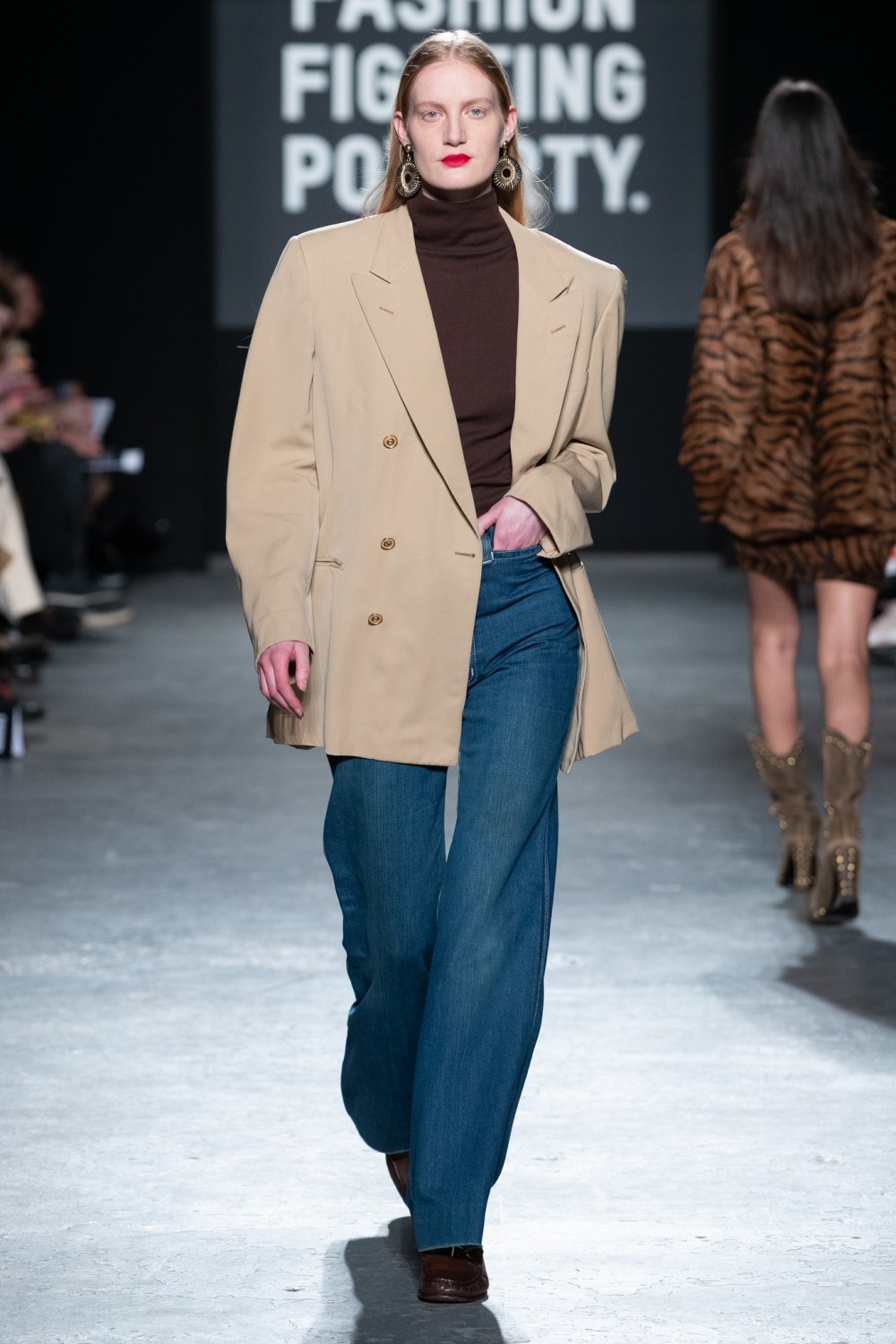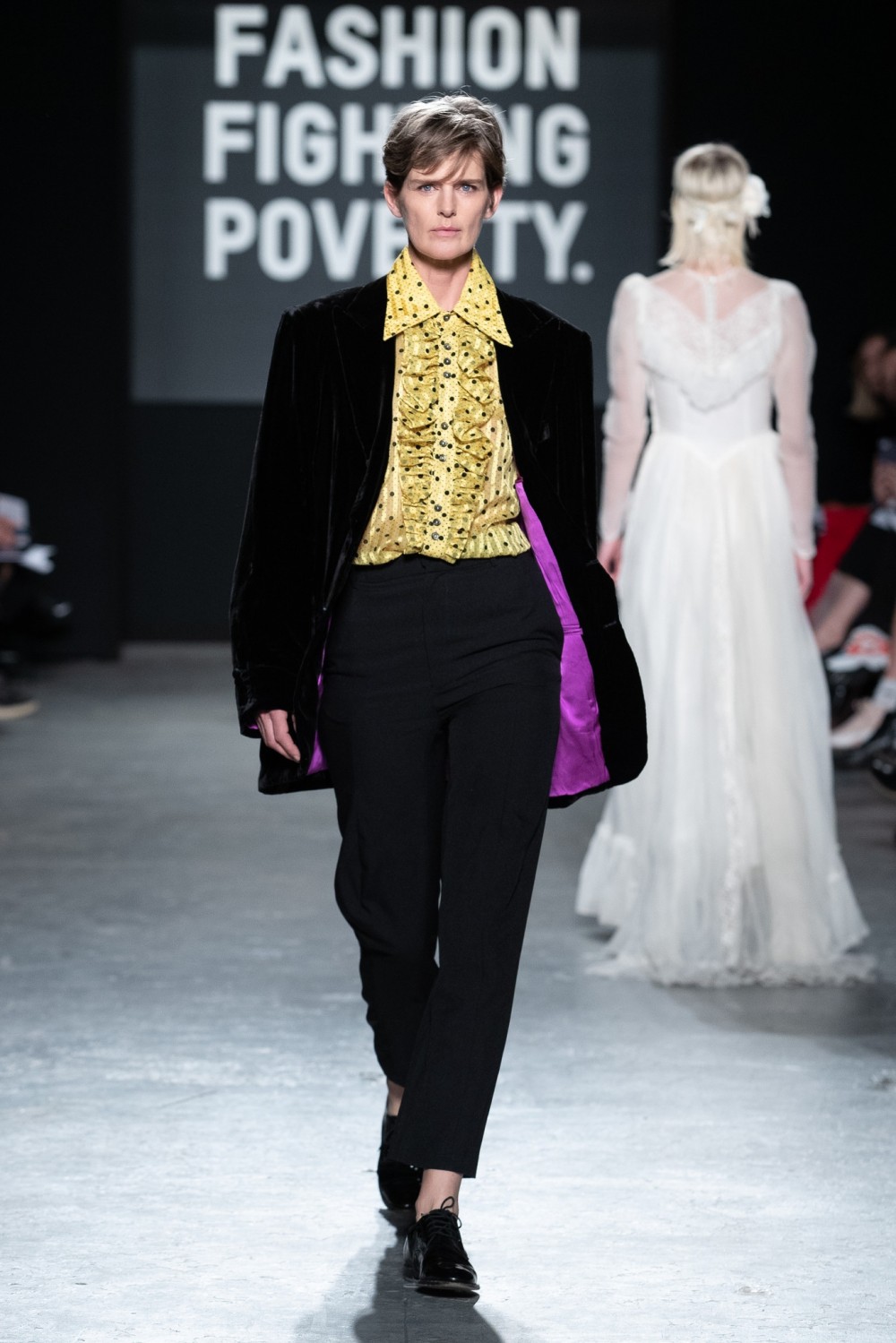Feel good about fashion by making the most of the clothes you own

Eleanor Turnbull. Oxfam ‘Fashion Fighting Poverty’ catwalk show © Chris Yates/Oxfam
Last week the government published a ‘Make Do and Mend’ report (my name, not theirs. And no, it has nothing to do with Brexit). The aim being to fix fashion by making retailers take more responsibility for their waste, end the throwaway era and encourage schoolchildren to repair and wear old clothes rather than buying into fast fashion. With a recommendation that ‘ lessons on designing, creating, mending and repairing clothes be included in the school curriculum’. This is good news because 60% of Brits can’t sew a button on. Meanwhile at London Fashion Week, I had a front row seat for Oxfam’s Fashion Fighting Poverty catwalk show, styled by Daisy Garnett. The runway was replete with stylish women in second-hand clothes getting behind the charity initiative. Stella Tennant, Yasmin Le Bon, Bella Freud and many more had volunteered their support for Oxfam’s campaign to save money, save lives and save the planet. Today’s throwaway culture leads to 300, 000 tonnes of clothing being incinerated or sent to landfill each year. And Britain buys more fast fashion than anywhere else in Europe.
There’s definitely a ‘making the most of the clothes you own’ mood permeating the atmosphere. Grazia magazine’s recent Big Fashion issue celebrated pre-owned clothes with a feature on ‘Hunter Gatherers’, a group of vintage fashion experts including Sophie Hersan the co-founder of re-commerce site Vestiaire Collective and Kerry Taylor the vintage fashion auctioneer. ‘Vintage isn’t second-hand clothes, it’s something with age and style,’ said Taylor, and to back this up Grazia published a fashion photoshoot featuring only vintage clothes. In the Guardian, fashion editor Jess Cartner-Morley has started mixing items from her own wardrobe with ‘this week’s most-wanted’. This is how it used to be. Growing up in the 1970s, I lived in second-hand clothes, new items were a rarity back then and there was no such thing as fast fashion. As a fashion student in Manchester in the 1980s, experimenting with outfits, adapting second-hand clothes and running up my own Bodymap-inspired tube skirts on the college overlocker was good creative fun. Style magazines like i-D and The Face regularly featured people in their own clothes and fashion editors often customised outfits or made garments for photoshoots.

Yasmin Le Bon © Chris Yates/Oxfam

Ibukun Sammy. © Chris Yates/Oxfam

Stella Tennant. Oxfam ‘Fashion Fighting Poverty’ catwalk show at London Fashion Week. © Chris Yates/Oxfam

Bella Freud. © Chris Yates/Oxfam
In the era of Instagram, fashion has become super-fast. Outfits are often bought and returned because the influencer doesn’t want to be seen in the same things twice. But it’s not just consumers (as the government report confirms), fashion brands are guilty of environmental crimes, too. Last year Burberry made the headlines for destroying unsold products and this apparently is quite a common practise amongst both luxury and high street brands. And I know this might seem a bit rich coming from a fashion journalist who regularly features product on her website – I’m not perfect, but I’m trying to figure out this new business model and would always encourage choosing considerate consumption over excess.
We all need to address fast fashion and its impact on the environment, make a commitment to sustainability and get back to a more realistic way of dressing. Personally, I like experimenting with my old clothes and working out new outfit combinations; I’m very careful about accepting gifts (and there are new rules on this) and when I do buy something new, often I’ll wait for the garment to be reduced in the sale (giving me plenty of time to think carefully about the purchase). It’s worth looking at the Love Your Clothes campaign, developed with industry organisations to help create a more circular approach. The website contains information on what to do with unwanted clothes: swapping, recycling and sending to charity ( I send mine to charity). As Oxfam announced at the opening of their fashion show, ‘Say no to fashion ending up in landfill and yes to clothes having a longer lifespan.’
Some of the catwalk items are still available to buy on the Oxfam website.
Considerate consumption is a good term. A mixture of some new things, vintage and shopping our own wardrobes seems to be sensible for those of us who enjoy ‘style’. I think it’s the younger generation who really need this message though. Like you Alyson, I am of the generation that was used to second hand clothes and adapting cast offs.
Mass consumption really needs to be halted, not just for the planet, but for the humans being damaged in the manufacturing process.
I am happy to wait and save up for things, but that’s because I’m older and wiser. Really the whole industry should be taken on.
You always give a very responsible message and I wish younger fashion writers would follow suit.